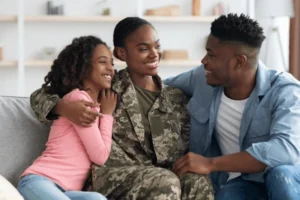What are Wraparound Services?

Wraparound services originated in the 1980s based on the work of children’s health professionals and developmental psychologists seeking effective ways to help children with significant behavioral, emotional and developmental learning challenges. Through the 1990s and 2000s, wraparound services evolved into a comprehensive system which include not only children with significant challenges, but also those with more typical emotional and/or learning issues. Initially, the wraparound approach focused on the relationship between families, social workers and mental health personnel. What distinguished wraparound services from the types of interventions that preceded them was the family-centered, results-driven, adaptable nature of the process. For example, Wraparound teams meet with all the relevant parties. Students, families, and therapists all participate. Then they decide on a plan, implement the plan and check in frequently to make sure it’s working. If it’s not, they make the necessary changes, implement them, and the process begins again.
Wraparound Fundamentals
In a breakthrough publication in 1998, prominent Wraparound theorists Barbara J. Burns and Sybil K. Goldman identified the following Ten Fundamental Wraparound Elements:
- Strength Centered Family Involvement
- Team Oriented
- Adaptability in Resources and Services
- Personalized Programming
- Resilience
- Results Oriented
- Community Centered
- Culturally Sensitive and Aware
- Organic Support Systems (i.e. families and relevant, involved adults and caregivers)
- Collective and Collaborative
These guidelines serve as an organizing framework for Wraparound Services throughout the U.S.. Professionals who work with children recognize them as the primary factors that distinguish Wraparound from other types of educational, psychological or behavioral interventions for youth.
Wraparound in Schools

Wraparound services in schools are designed to give a child the support he or she needs throughout the school day, whether the support is academic, social or behavioral. In most cases, what separates Wraparound from other support systems is its comprehensive approach. Wraparound directly involves all relevant parties in the identification, development and implementation of the intervention strategy.
The Wraparound team exists to serve the child and family. The family does not have to bend over backwards to fit into a pre-existing system. In the beginning phase of a process, the Wraparound team, led by a Wraparound facilitator, meets with the child and family to actively listen to their individual needs. Then, the team determines areas of strength upon which a specialized strategy can be based. Next, after considering the specific goals of the student and family, the Wraparound team formulates a plan which includes everyone. That means family, student, teachers, school administrators, and guidance counselors. Any relevant parties directly involved in the life of the child should be involved.
Additionally, a Wraparound Plan always involves frequent checks and balances so that progress can be monitored and assessed. Any necessary changes can be implemented immediately before a student begins to slip back into the types of behavior or situations that the process is designed to remedy. If a child needs help reading, then everyone involved knows exactly what strategies are being implemented to help with reading. The same goes for social, emotional and behavioral issues. All the relevant parties know what the goals are and understand their role in the process. Because they’re all part of the solution. The idea is to surround a child with 360 degrees of responsive, adaptable support and to give the student and family realistic tools for success.
The School and Beyond
The ultimate goal of a school-based Wraparound Plan is for the student and family to transition out of the system. Interventions equip families with strategies that ensure positive growth for the duration of the student’s school experience and beyond. A Wraparound Plan places focus on student and family empowerment and emphasizes only what works in any given situation.
The most effective Wraparound Plans don’t disappear when a child walks off the school grounds. In fact, if a plan does not follow the student from the classroom to the playground, the sports field, the neighborhood and then home, then it’s not a true Wraparound Plan. Once a plan goes into effect, the plan stays in effect. It does not end until its positive and proactive elements become a natural part of daily life. That way, it enables the student to actualize their potential and enter adulthood as a productive and stable member of the community.






























































